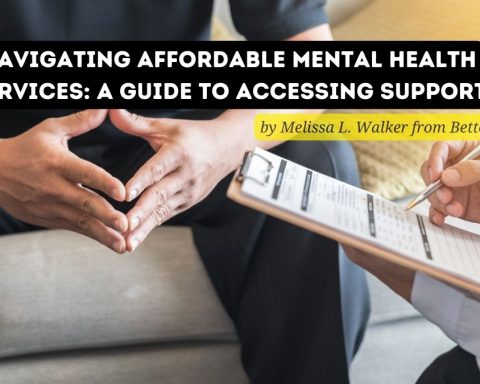Depression is a common mental disorder that presents with depressed mood, loss of interest or pleasure, decreased energy, feelings of guilt or low self-worth, disturbed sleep or appetite, and poor concentration. Moreover, depression often comes with symptoms of anxiety. These problems can become chronic or recurrent and lead to substantial impairments in an individual’s ability to take care of his or her everyday responsibilities. At its worst, depression can lead to suicide. Almost 1 million lives are lost yearly due to suicide, which translates to 3000 suicide deaths every day. For every person who completes a suicide, 20 or more may attempt to end his or her life (WHO, 2012).
Depression is a commonly occurring, serious, recurrent disorder linked to diminished role functioning and quality of life, medical morbidity, and mortality. Today, depression is estimated to affect 350 million people. The World Health Organization (WHO) has ranked depression the 4th leading cause of disability worldwide and projects that by 2020, it will be the second leading cause.
Prevalence
Lifetime prevalence estimates of Depression ranged from 1.5% (Taiwan) to 19.0% (Beirut) with the midpoints at 9.2% (West Germany) and 9.6% (Edmonton, Canada). Twelve-month prevalence estimates ranged from 0.8% (Taiwan) to 5.8% (Christchurch, New Zealand), with the midpoints at 3.0% (US) and 4.5% (Paris). Lifetime prevalence estimates of Depression ranged from 1.0% (Czech Republic) to 16.9% (US), with midpoints at 8.3% (Canada) and 9.0% (Chile). The 12-month prevalence estimates ranged from 0.3% (Czech Republic) to 10% (US), with midpoints at 4.5% (Mexico) and 5.2% (West Germany).
Illness Course
Few large-scale longitudinal general population studies show that a substantial proportion of people who seek treatment for major depression have a chronic-recurrent course of illness. The community survey finding that lifetime prevalence is two-three times that of 12-month prevalence suggests that between one-third and one-half of lifetime cases have recurrent episodes in a given year. However, long-term longitudinal studies also show that some people with lifetime Major Depression fail to report their history of depression in cross-section studies.
Age-of-Onset
Depression usually found, with the median age in the early to mid 20s, with ranged from mid-late adolescence to the early 40s.
Socio-demographic Correlation
Almost all community epidemiological studies find that gender, age, and marital status are associated with depression. Women typically have a two-fold increased risk of major depression compared to men, individuals who are separated or divorced have significantly higher rates of major depression than the currently married, and prevalence of major depression generally goes down with age, This evidence, however, comes primarily from studies conducted in Western countries. The sparse data available from low-middle income countries suggest that the age pattern might either be non-monotonic or reversed compared to other countries, with depression increasing with age.
The Adverse Consequences of Major Depression
A number of epidemiological studies have examined the effects, with a focus on four domains: education, marital timing and stability, childbearing, and occupation.
Education: Several studies show early-onset mental disorders associated termination of education.
Marital timing and stability: Early-onset mental disorders predict low probability of ever marrying, but are either positively associated or unrelated with early (before age 18) marriage, which is known to be associated with a number of adverse outcomes, and negatively associated with on-time and late marriage, which are known to be associated with a number of benefits (e.g., financial security, social support).
Teen childbearing: Major Depression and a number of other early-onset mental disorders were significant predictors of increased teen childbearing. Disaggregation found that the overall associations were due to disorders predicting increased sexual activity but not decreased use of contraception.
Employment status: Although depression is known to be associated with unemployment, most research on this association has emphasized the impact of job loss on depression rather than depression as a risk factor for job loss.
Role performance
Marital functioning: It has long been known that marital dissatisfaction and discord are strongly related to depressive symptoms.
Parental functioning: A number of studies have documented significant associations of both maternal and paternal depression with negative parenting behaviors. These associations are found throughout the age range of children, but most pronounced for the parents of young children.
Days out of role: Studies typically find that Major Depression is associated with among the highest number of days out of role at the societal level of any physical or mental disorder due to its combination. Studies attempted to estimate the annual salary-equivalent human capital value of these losses. These estimates were in the range $30.1 billion to $51.5 billion.
Financial success: One of most striking aspects of the impairment associated with Depression is that the personal earnings and household income of people with Depression are substantially lower than those of people without depression. However, it is unclear whether depression is primary a cause, consequence, or both in these associations due to the possibility of reciprocal causation between income-earnings and Depression.
Morbidity and mortality
It is now well established that Major Depression is significantly associated with a wide variety of chronic physical disorders, including arthritis, asthma, cancer, cardiovascular disease, diabetes, hypertension, chronic respiratory disorders, and a variety of chronic pain conditions. These associations have considerable individual and public health significance and can be thoughts of as representing costs of depression in at least two ways. First, to the extent that Depression is a causal risk factor, it leads to an increased prevalence of these physical disorders, with all their associated financial costs, impairments, and increased mortality risk. A variety of poor health behaviors known to be linked to Depression, such as elevated rates of smoking and drinking, obesity, low compliance with treatment regimens, and a variety of biological dysregulations, such as hypothalamic-pituitary-adrenal hyperactivity and impaired immune function. Based on these considerations, it should not be surprising that Depression is associated with significantly elevated risk of early death. This is true not only because people with Major Depression have high suicide risk, but also because depression is associated with elevated risk of onset, persistence, and severity of a wide range of physical disorders.
Summary Points
- Major depression is a commonly occurring disorder in all countries where epidemiological surveys have been carried out.
- Lifetime prevalence estimates of major depression vary widely across countries, with prevalence generally higher in high income versus low-middle income countries.
- Age-of-onset distributions show consistent evidence for a wide age range of risk with median age typically in early adulthood.
- Course of major depression is often chronic-recurrent.
- Women consistently across countries have lifetime risk of major depression roughly twice that of men.
- Major depression is associated with a wide range of indicators of impairment and secondary morbidity, although some of these individual-level associations are stronger in high income than low-middle income countries.
Conclusion:
Depression is a mental disorder that is pervasive in the world and affects us all. Unlike many large- scale international problems, a solution for depression is at hand. Efficacious and cost-effective treatments are available to improve the health and the lives of the millions of people around the world suffering from depression. On an individual, community, and national level, it is time to educate ourselves about depression and support those who are suffering from this mental disorder.
About the Author
S.M. Yasir Arafat, MBBS, CCD, MBA, MPH, MD Psychiatry Resident-BSMMU. You can keep in touch with Dr. Yasir here.








